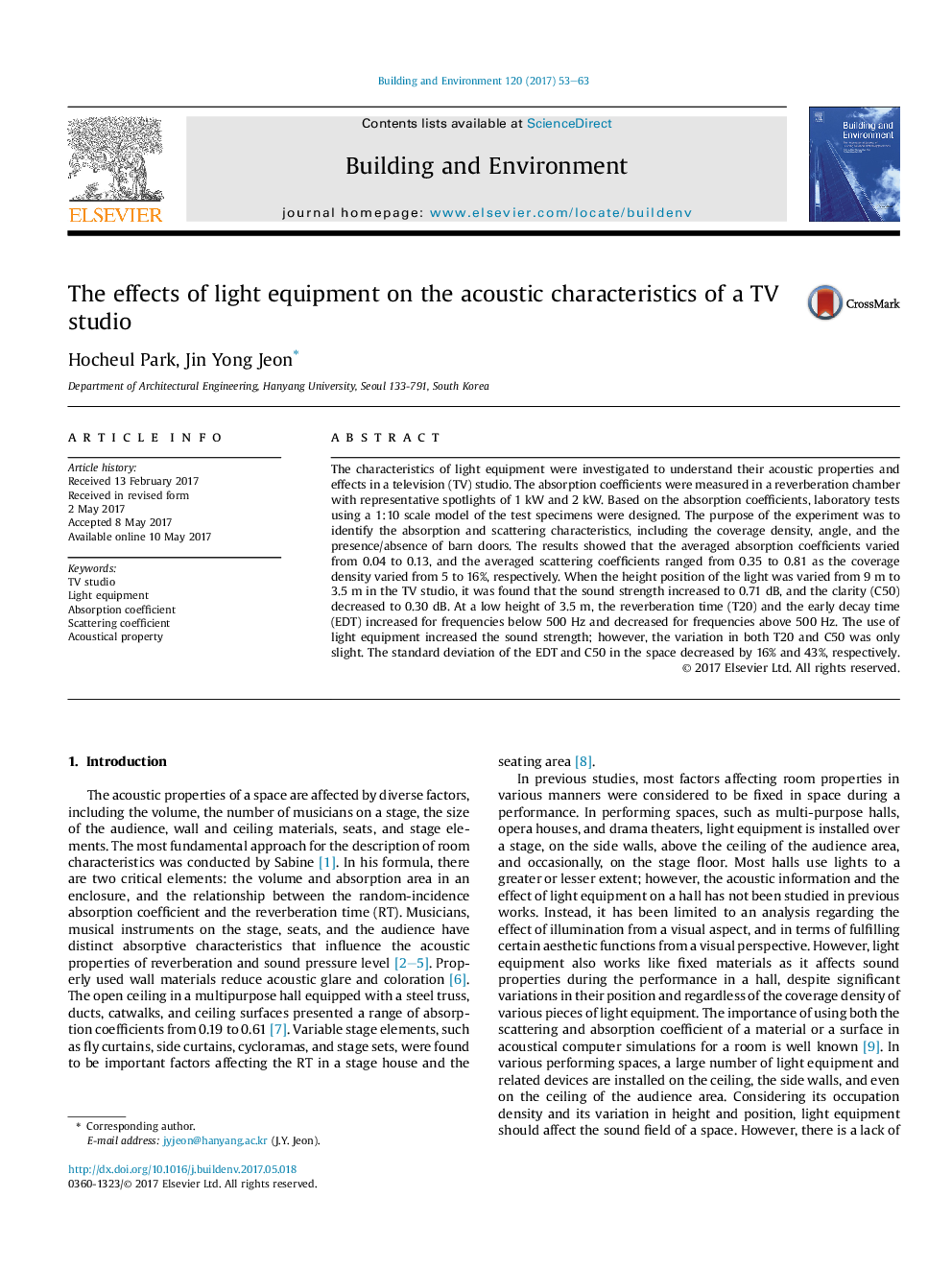| Article ID | Journal | Published Year | Pages | File Type |
|---|---|---|---|---|
| 4911488 | Building and Environment | 2017 | 11 Pages |
Abstract
The characteristics of light equipment were investigated to understand their acoustic properties and effects in a television (TV) studio. The absorption coefficients were measured in a reverberation chamber with representative spotlights of 1Â kW and 2Â kW. Based on the absorption coefficients, laboratory tests using a 1:10 scale model of the test specimens were designed. The purpose of the experiment was to identify the absorption and scattering characteristics, including the coverage density, angle, and the presence/absence of barn doors. The results showed that the averaged absorption coefficients varied from 0.04 to 0.13, and the averaged scattering coefficients ranged from 0.35 to 0.81 as the coverage density varied from 5 to 16%, respectively. When the height position of the light was varied from 9Â m to 3.5Â m in the TV studio, it was found that the sound strength increased to 0.71Â dB, and the clarity (C50) decreased to 0.30Â dB. At a low height of 3.5Â m, the reverberation time (T20) and the early decay time (EDT) increased for frequencies below 500Â Hz and decreased for frequencies above 500Â Hz. The use of light equipment increased the sound strength; however, the variation in both T20 and C50 was only slight. The standard deviation of the EDT and C50 in the space decreased by 16% and 43%, respectively.
Related Topics
Physical Sciences and Engineering
Energy
Renewable Energy, Sustainability and the Environment
Authors
Hocheul Park, Jin Yong Jeon,
